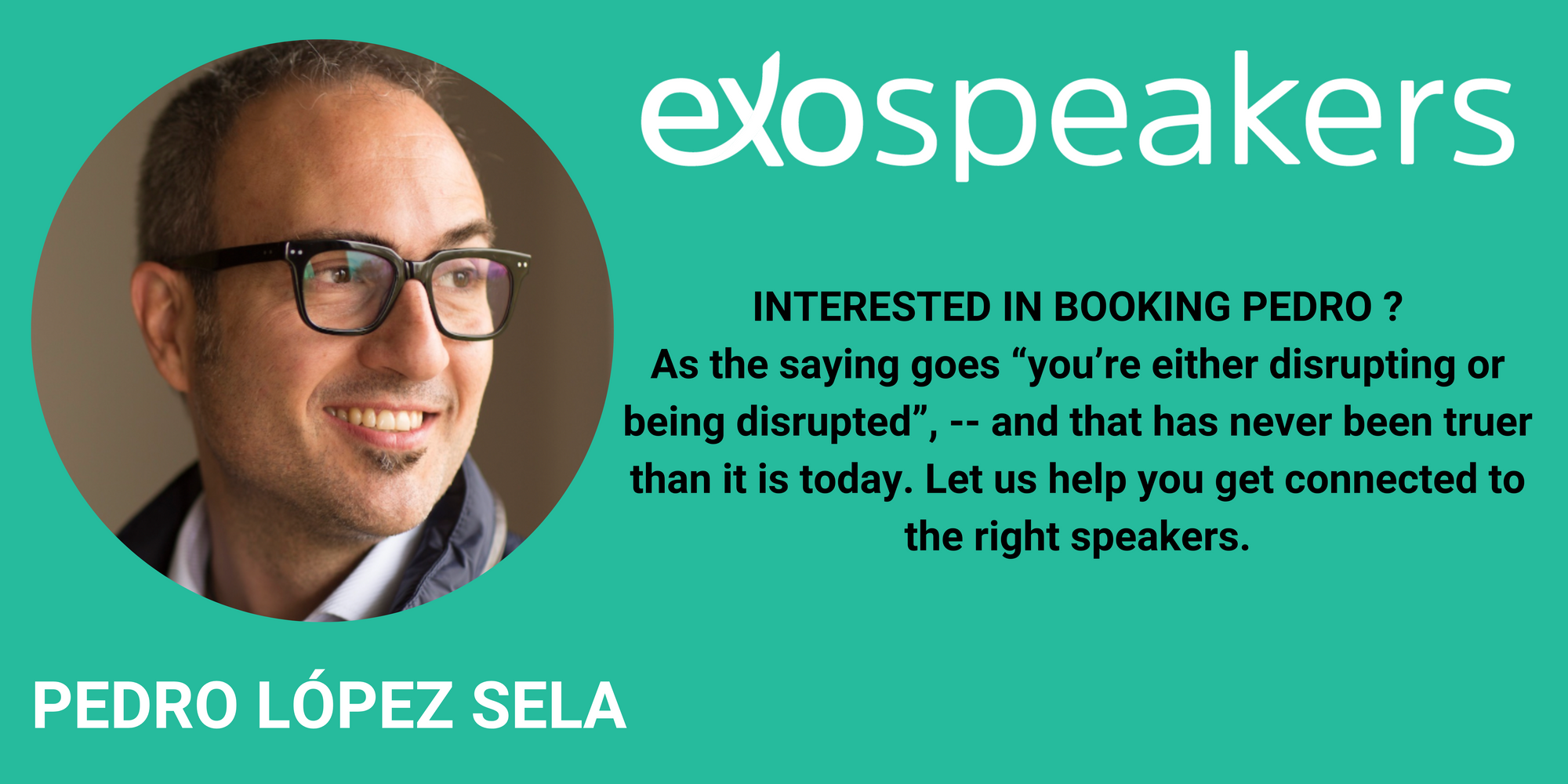
Innovation and the Corporate Immune System
In this era of disruptive innovation, especially if we consider that since 2000, 52% of the Fortune 500 companies have gone bankrupt, were sold or simply ceased to exist due to digital disruption and, according to Harvard Business Review, 75% of Standard & Poor's companies will be replaced by 2027.
Let's think about innovation and its effects at the level of business organizations. Let's start by first trying to have a clear idea of what we should understand by innovation, a concept with which the history of humanity is closely linked.
For some, innovation is related to the invention of new things; for others, it is a new way of solving a problem; as it is popularly said: "Innovation is everything related to new things." In business, it can be considered as improving what already exists, providing new options to meet the needs of consumers, or even creating new products to be successful in the market.
Whatever your concept of innovation, if you think about it carefully, you will see that it has more to do with developing new concepts to progress. In reality, what is important is how each person develops new ideas, technologies, business models, and, why not, even a different paradigm for viewing the world. It is enough to remember Leonardo Da Vinci.
The topic of innovation was recently discussed at the Brazilian Management Institute Foundation, a center of excellence for executive development. They talked about how companies pursued innovation and pointed out many ways of pursuing it. One of them is copying, but copying an innovation and trying to apply it to your company is no guarantee of success because each organization is different, and each individual thinks in a certain way.
Innovation is the mentality. It is a way of doing things better and more efficiently, every day and all the time. It is safe to say that innovation starts inside our brains. Humanity loves to talk about technological progress but rarely tries to apply that mindset to everyday life.
Yet innovation affects every aspect of our lives. Thanks to innovation, new forms of communication and transportation are created, new ways of educating, and, at the business level, new products, new services, and so on. Innovation bursts into organizations as viruses and bacteria do in the human organism, and, as in the body, there is a reaction to the irruption of something external.
The Immune System
When the organism is confronted with a microorganism capable of producing disease, as in the case of coronavirus, the immune system responds in two ways in parallel: the so-called innate response, which is the first to develop and is normally effective in eliminating different types of aggressors, and the adaptive response, which produces antibodies capable of destroying certain microorganisms or infected cells. When functioning properly, the immune system identifies several threats and goes into action to fight off foreign invaders.
"The innate response is the first thing we see when we attend to an illness," explains Dr. Silvia Bucciarelli, coordinator of the NGO PINEAS (Integrated Program of Immunology and Autoimmune Diseases). This response increases blood flow to the infected area, and cells and certain substances - such as proteins and cytokines - come out of the blood vessels to try to stop the infection.
Innate immunity does not protect against any specific threat; its job is to keep anything foreign out of the body.
The adaptive response produces antibodies capable of destroying specific microorganisms or infected cells. However, this response can take four to seven days to arrive, "that is why the innate response has to try to maintain the front line of battle until the immune response develops, which is like a missile that is aimed at a particular organism and not at another," the expert continues.
Adaptive immunity must first recognize, process the threat, and then respond by creating antibodies designed to attack the threat. A particular feature of the adaptive response is that it leaves a memory, i.e., once the threat has been neutralized, it remembers what has worked and makes sure that the same threat does not harm us again in the future; it remembers the pathogens your body has come into contact with in the past, and so it will know how to fight them in the future.
But sometimes, the immune system can go awry and start working improperly when mistaking its proteins for invading agents produces antibodies against the body's components. This is known as an autoimmune disease. In other words, autoimmune disease is a disease caused by our immune system. Amazingly, something that protects us can work against us.
What about Business Organizations?
As in the human body, business organizations also have an immune system that is an important variable in why change and new ideas (even good ones) fail in organizations.
When innovation attempts to enter the workings of an organization, the organizational immune system recognizes it. It reacts in response to what is occurring, especially if it threatens the status quo.
The organizational immune system has an innate and adaptive response. The innate response stops anything that seems to go against the rules (depending on the effectiveness of the controls); without investigating or analyzing whether it is good or bad or whether it can benefit the organization, the response is straightforward: it is against the rules; therefore, it is not allowed in the organization!
Organizational adaptive immunity is more complex and complicated. It is an immune system that remembers the pains of the past and what it took to get to the current status quo and will do everything it can to keep outside influences out and protect the organization's priority activities, precisely those that have made it what it is today.
When a new idea challenges these activities or impacts the power of those who control them, the immune response kicks in: Attack! Rules are changed to allow and legitimize new ideas, but that will not stop the more subtle resistance to change offered by the complex adaptive organizational immune system.
Such resistance manifests itself through expressions like, "This will never work here because..."; "You want to introduce this new XXX, but that competes with our successful YYY, that's nonsense"; "We're good at YYY, why do XXX?" or "Over my dead body."
Let's look at one case
Three decades ago, there were eight major music recording studios in the world that dominated the industry. Then came innovation: digital technology. The major studios ignored the digital revolution and its impact on consumers. The collective organization's immune system attacked it, convinced that they could end this perceived threat by winning court battles or simply dismissing it as a fad that wouldn't work.
They failed to realize that this digital model could not be beaten. It was just a matter of when and how, and as their immune system struggled to "protect" them from this perceived "invader," the market environment inevitably continued to transform.
Because they did not evolve with the changing environment, these eight major studios eventually disappeared, and the music industry self-destructed as everyone knew it. In its place arose a new, transformed music industry that today has reached as far as cell phones and smart speakers. This new industry, spearheaded by two digital platforms, collects large volumes of revenue from record sales.
This example shows us that organizational immune systems do not bring down a single company. They can collapse entire industries.
The Problem is the Comfort Zone
Our comfort zones are boundaries that we build over time because they make us feel comfortable and safe; to protect ourselves and not leave that zone, we use coping strategies. The comfort zone determines the individual's ability and willingness to adapt to change and cope with uncertainty. The problem is that we do the same in organizations, which can prevent us from unleashing our full potential personally and organizationally.
Going beyond the known requires great self-awareness and courage. What is it that can hold the individual or the company hostage to the comfort zone? Scholars have found at least three obstacles that keep us from stepping out of our famous comfort zone.
The first is fear. When we reach the edge of our comfort zone, we resist leaving the familiar and start making excuses, reasons, and justifications. We seek to play it safe and rationalize not taking a step forward, even if it means not giving the best we have.
The second obstacle is instincts. Have you ever felt your heart rate increase when you are under stress, your hands get cold or clammy, or your face redden? All of these are our body's way of warning us that we are about to step out of our comfort zone, bringing us back to the first obstacle.
The third is emotions. We can get angry, withdrawn, scared, or sad at the mere thought that we might step out of our comfort zone, and then we respond with excuses and reasons why we can't, won't, or shouldn't do something if it's out of our comfort zone.
Being comfortable is not a bad thing, nor is feeling safe; it's just that when comfort becomes the reason for lack of fulfillment, it creates a problem. So, in the face of fear, it is best to stay focused on what you want, in the long run, and why it is important. Knowing your purpose and sticking to it is the only way to get over the top of your comfort zone. The same is true in business; it is important to recognize when an organization is pushed out of its comfort zone so that its managers align towards a structured purpose to focus on and make the required changes.
Therefore, the important thing is not to allow the comfort zone to prevent the development of the full potential, both personal and organizational.
Business Innovation is Essential
There's a phrase that says: "innovate in your own business, or someone else will." This is something that should concern entrepreneurs in this era of disruptive innovation, especially if we consider that since 2000, 52% of the Fortune 500 companies have gone bankrupt, were sold or simply ceased to exist due to digital disruption and, according to Harvard Business Review, 75% of Standard & Poor's companies will be replaced by 2027.
This implies recognizing that innovation must be a priority not only for entrepreneurs but for every company that wants to stay alive and growing since a brilliant idea is what initially inspires great companies and is what makes them grow and expand. According to Deloitte, two-thirds of companies innovate either to grow or to differentiate themselves from their competitors, while half of them do so to satisfy their customers' needs, which are constantly changing, implying that innovation is required to survive.
Corporate innovation must be a priority at all times. The important thing is to determine how urgent it is to innovate. To do this, the first thing to consider is your customers since, for example, millennials and generation Z have to change needs and are becoming dominant forces. If your products or services are mostly aimed at these customer groups, and you notice that the market is declining, that may be a sign of trouble and the start of innovation.
Next, assess whether the market is saturated. Most products start as unique, but when competitors start distributing them, the brand name is the only thing that distinguishes everyone. If this happens, it is time to innovate, just as if all companies in the industry use the same business model.
Finally, companies should not forget to attract the best innovative talent. Innovative people want to work with innovative companies, and when these innovative minds join a company, they can help it innovate even more. A good working culture is needed for innovation, as a risk-averse culture could stifle it.
Overcoming Immunity
Since managers are part of the immune system, and their influence in controlling the organization's capabilities and resources should not be underestimated, it is necessary to create a system in which they have little or no influence on what happens in the innovation environment.
Of course, managers must have a say in ensuring, where appropriate, that there is a balanced investment in innovation, that it is in line with the organization's strategic direction, and that this investment is untouchable outside the innovation arena. This is why creating a separate innovation unit with its management and resources is preferable.
Problem-solving, leadership, and entrepreneurship are essential in corporate innovation. But some things need to be done right; according to Deloitte, commonalities among innovative companies include creating products in-house, finding partners to develop the product together, adopting joint ventures, and making targeted investments to acquire new capabilities. With that in mind, some recommendations emerge for companies that are looking to innovate:
1. Create a corporate innovation laboratory. This involves removing barriers that prevent employees from testing their ideas, which is fundamental to innovation. Many employees of large companies are creative but cannot carry out their ideas because they have a very defined scope of work.
2. Include some venture capital in the corporation. It is a fact that entrepreneurship requires the investment that large corporations can offer in exchange for innovative ideas that can generate disruption in the industry.
3. Create a startup accelerator program hosted within a large company with offices, mentoring, and some capital. Startups are autonomous but are connected to corporations so that if the venture grows, the corporation can reach mutually beneficial agreements and participate in innovation and market growth.
4. Make it mandatory for all organization members to dedicate a certain amount of time to an innovation project (of any kind). This ensures that the best technical resources work on disruptive innovation projects.
5. Don't tell people what project they should work on. Let them choose because if they work on what they are interested in, they will become more innovative and productive. Managers should be measured according to their contribution to innovation projects, and this variable should be included in annual performance reviews.
6. Finally - and this is very important - the purpose of the innovative company is to feed and seed the established company with new and fresh products and services. If the idea flies, deliver it! The board of directors must fervently resist the temptation to turn it into a stand-alone, publicly traded company. If you do, the immune system will never trust you again - you've just killed their golden goose!
In general, it is fine to maintain efficiency and sustained innovation as part of normal business operations, but again make sure that expectations are clearly defined as results are measured against them.
The ExO Framework
We are witnessing the most fundamental business paradigm shift since the industrial revolution: the Exponential Organization (ExO) rise. Exponential organizations have spearheaded an entirely new way of doing business, taking full advantage of technology and fundamental change, and the results are clear: They are growing 10 times faster and cheaper than their competitors, who cling to traditional business models and leadership designed to manage a predictable and stable status quo.
The question then is: How can you bypass your organization's immune system to adopt the ExO framework needed for today's modern landscape where you fight the immune system when attempting disruptive innovations?
One way to do this without triggering the existing immune system is as follows:
In every organization, highly creative, driven people with brilliant ideas are frustrated by constraints, ultimately leading them to quit. The important thing is for great companies to spot them and give them free rein to build ExOs.
John Hagel, the Center for the Edge co-chair, developed an approach to large-scale organizational change whose basic guidelines are: Pursue only new markets to avoid immune system response and invite the most disruptive change agents in your current organization to work on your ExO. It is critical that the ExO function as a new operation, striving not to use existing infrastructure unless they provide a major strategic advantage.
Management expert Gary Hamel says that young people, mavericks, and those who work on an organization's geographic and mental periphery are the most interesting, free, and open thinkers; therefore, look for the rebels, and it won't be hard to find them.
Don't allow the team to receive too much help, money, or other resources. If the parent company perceives that too many resources are being poured into the new initiative, it will provoke a backlash and try to kill the startup. It also directs the ExO outward as the startup must create a new market or product area and NOT cannibalize the core product set, at least in its early stages.
All this will prevent the organizational immune system from kicking in.
The other way is to apply seven of the eleven attributes of the ExO framework to accelerate the company's operations, i.e., an "ExO lite." These attributes are Massive Transformational Purpose (MTP), Community and Crowd, Algorithms, Customer Engagement, Experimentation, Dashboards, and Social Technologies.
One last recommendation: think about your comfort zone that is preventing you from being a disruptive innovative entrepreneur.

ExO Insight Newsletter
Join the newsletter to receive the latest updates in your inbox.








